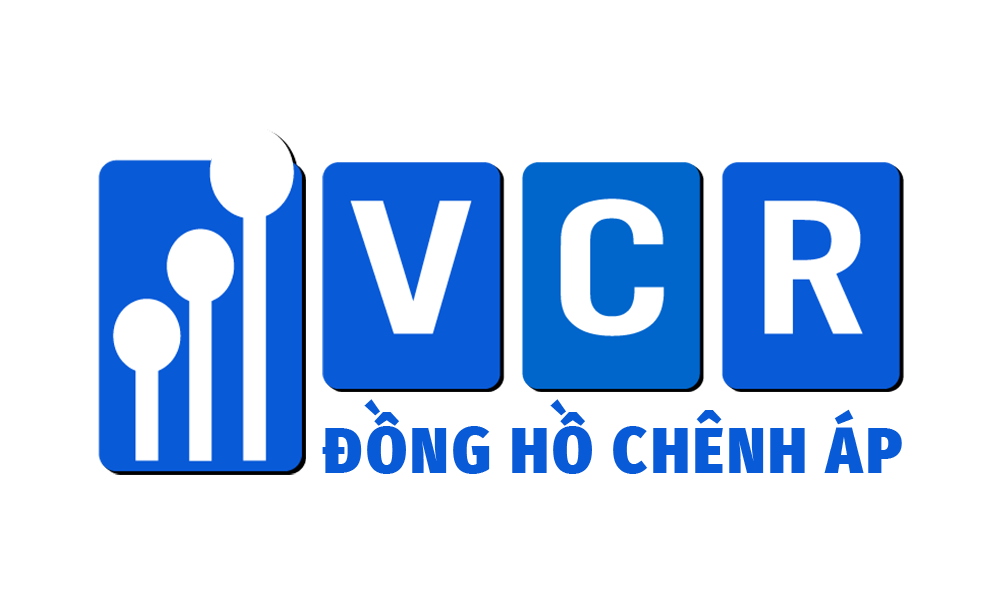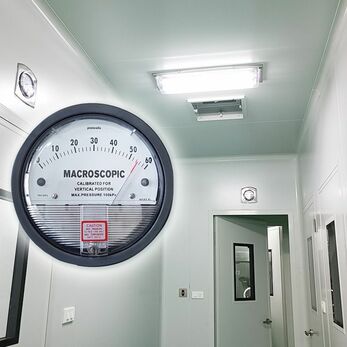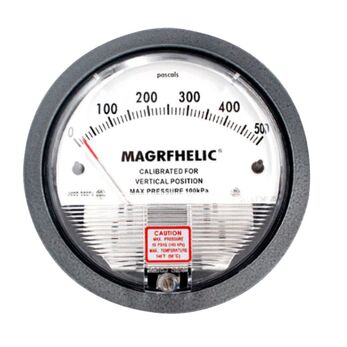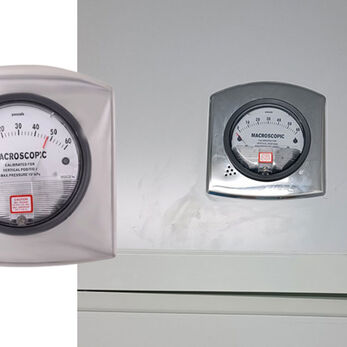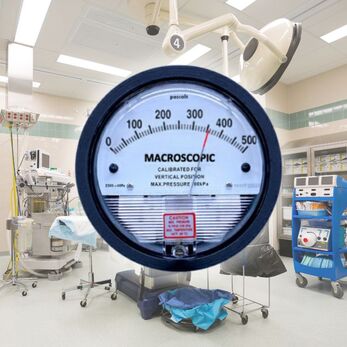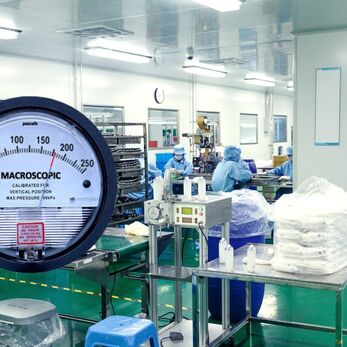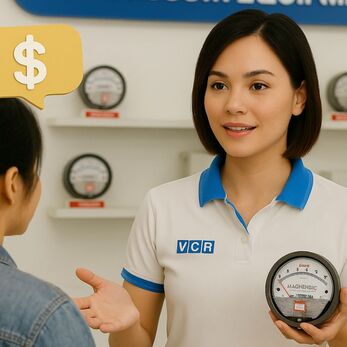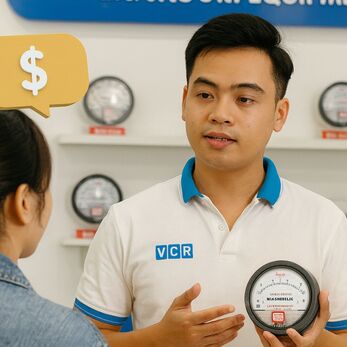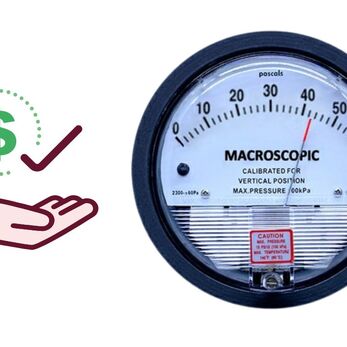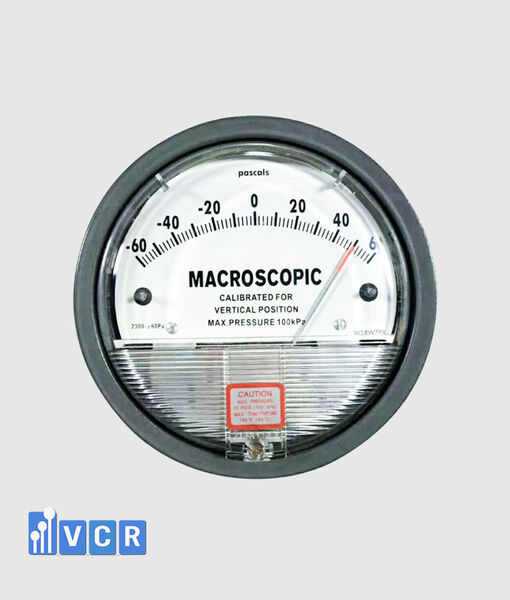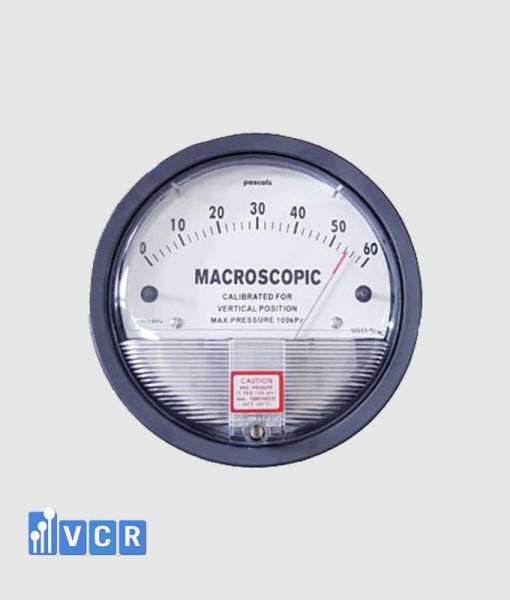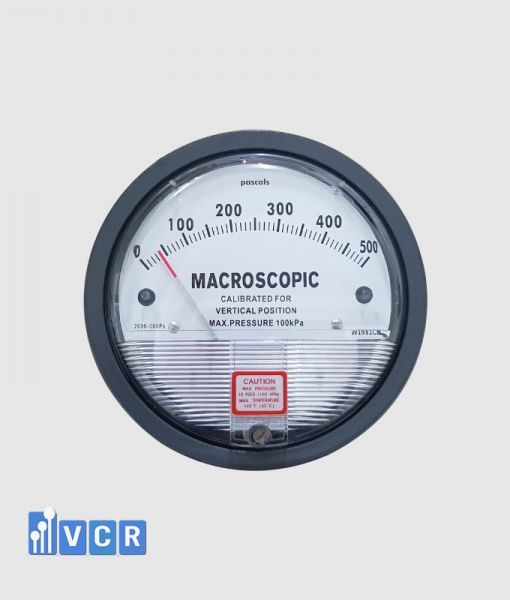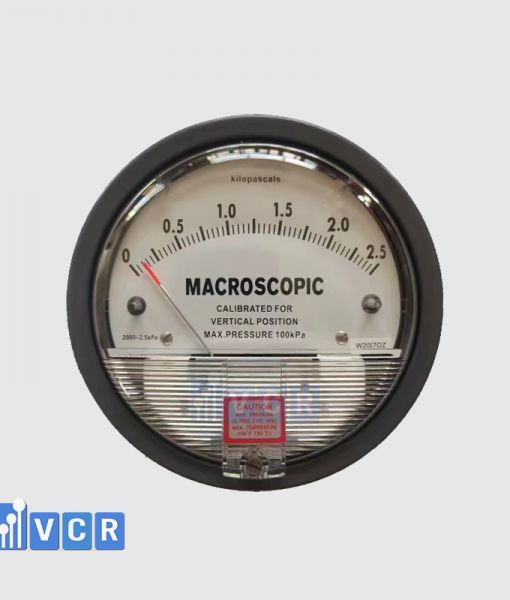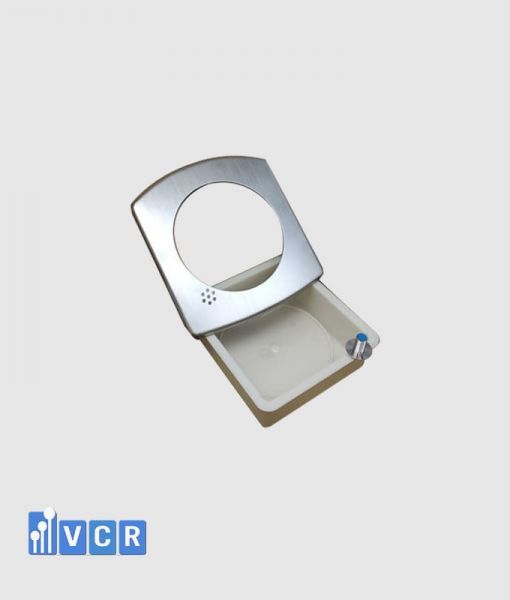Maintaining stable pressure between cleanroom zones prevents dust and bacteria intrusion. VCR’s precise, durable differential pressure gauges ensure ISO/ESD compliance for electronics factories.
- Differential Pressure Gauges - Indispensable Devices in Electronics Manufacturing Cleanrooms
- How to Choose the Right Supplier of Differential Pressure Gauges for the Electronics Industry
- Why VCR Is the Top Choice for Differential Pressure Gauges in the Electronics Sector
- Common Types of Differential Pressure Gauges Used in Electronics Factories
- Ordering Process and Technical Support from VCR
- Frequently Asked Questions (FAQ)
Differential Pressure Gauges - Indispensable Devices in Electronics Manufacturing Cleanrooms
In the electronics component manufacturing industry, environmental control is strict—especially air pressure between cleanroom zones. If pressure differentials are not kept stable, dust and microbes may penetrate, severely affecting the quality of microcircuits, PCBs, and tiny electronic components. That is why differential pressure gauges become mandatory in modern electronics cleanrooms. This device monitors and displays the pressure difference between two zones, typically between the cleanroom and adjacent corridor or surrounding areas.
Why the electronics industry needs differential pressure gauges
-
Ensure stable cleanliness: Positive pressure pushes clean air outward and prevents contamination entry
-
Maintain standard conditions: Many SMT lines and component assembly rooms require constant pressure to avoid product impacts
-
Prevent product damage: Unusual pressure differences may lead to ultra-fine dust accumulation, causing circuit defects
Performance and durability requirements
For cleanrooms in electronics manufacturing, differential pressure gauges must have high accuracy (low error ±1 %), long-term stable operation, and the ability to withstand humidity and fine dust. Additionally, they should be easy to calibrate, easy to read, and able to integrate into remote monitoring systems when needed. Choosing the correct cleanroom differential pressure gauge for electronic helps ensure output product quality, extend equipment lifespan, reduce production risks, and increase productivity.
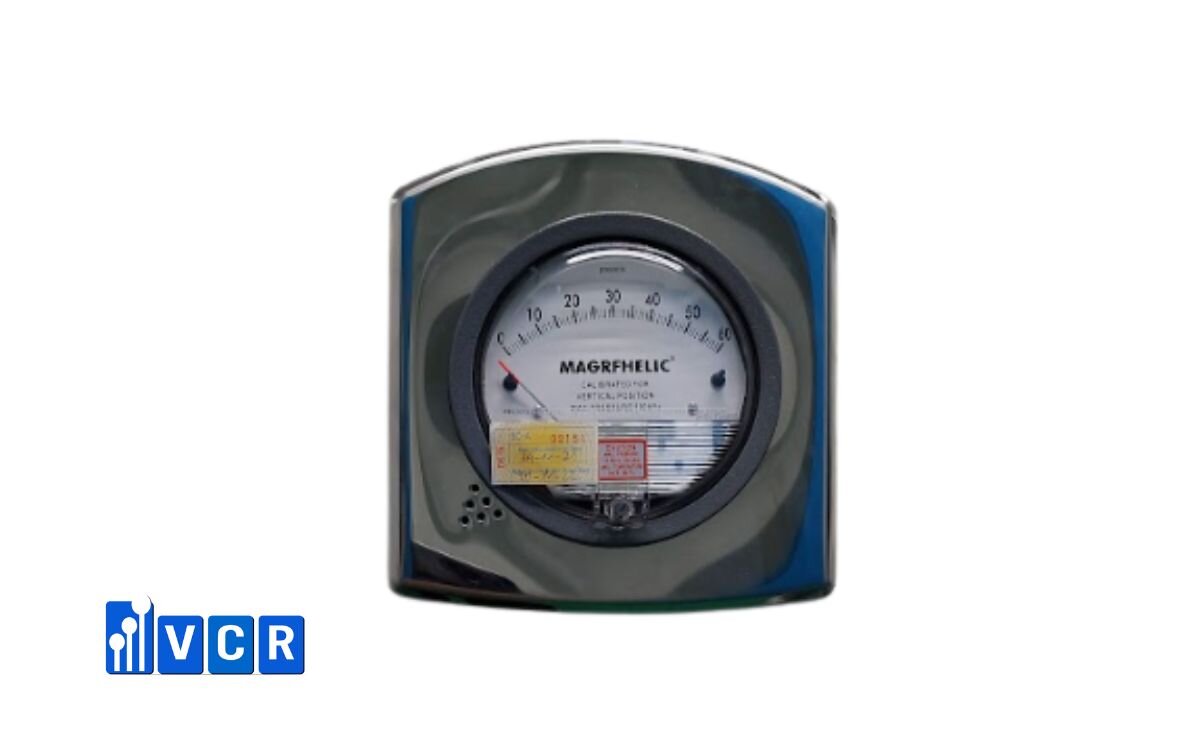
Read more: Latest price list of Differential pressure gauge used in electronics factory
How to Choose the Right Supplier of Differential Pressure Gauges for the Electronics Industry
Selecting a differential pressure gauges supplier is not merely buying equipment—but choosing a technical partner who can guarantee quality in stringent cleanroom environments. Below are key evaluation criteria when assessing a reliable supplier:
Experience and expertise in electronics cleanrooms
A supplier with years of serving electronics factories understands:
- Cleanroom pressure standards by ISO 14644
- Optimal gauge placement for effective monitoring
- Technical requirements of SMT lines, assembly rooms, component warehouses
Products meeting quality and verification standards
Differential pressure gauges should satisfy:
- ISO 9001, GMP, or certified measurement accuracy
- Clear CO (Certificate of Origin) and CQ (Certificate of Quality)
- Reputable brands, high durability, suitable for dusty or low-humidity environments
Professional technical service and after-sales support
A trustworthy supplier must offer:
- Engineers with knowledge of cleanroom systems and production standards
- On-site installation, periodic calibration, and maintenance
- Advice on total solutions, not just selling devices
Clear delivery and warranty policies
- Commit to on-time delivery in project schedules
- Warranty from 12 to 24 months depending on model
- Fast replacement when technical faults occur to avoid production interruption
Comparison table of criteria for choosing a supplier
| Criterion | Requirement | Reason |
|---|---|---|
| Accuracy | Low error ±1 % | Ensures stable pressure control and effective cleanroom operation |
| Product quality | Reputable brand, durable materials | Devices operate reliably and fail less often |
| Technical support | Experts in cleanroom systems | Ensures correct installation and maintenance |
| Delivery & documentation | On-time delivery with full CO/CQ | Ensures adherence to project timelines and audits |
Expert tip: If you're building a new factory or upgrading a cleanroom, choose a supplier who offers both devices and consulting. This helps avoid incorrect installation or missing technical requirements.
Read more: Digital Differential Pressure Gauge Installation: A Comprehensive Guide
Why VCR Is the Top Choice for Differential Pressure Gauges in the Electronics Sector
With over 10 years of working with major electronics factories in Vietnam, VCR is not just a supplier of cleanroom equipment but a comprehensive technical partner that helps businesses meet the strict conditions of electronics manufacturing.
Specialist in cleanroom equipment for electronics factories
-
VCR has supplied devices and cleanroom solutions for hundreds of large-scale projects
-
In-depth understanding of ISO 14644, ESD requirements, and special demands of SMT lines, test rooms, and component storage
Wide range of differential pressure gauges to meet all requirements
VCR offers:
-
Analog differential pressure gauges: simple, cost-effective, ideal for non critical zones
-
Digital differential pressure gauges: clear display, high accuracy, alarm features
-
Gauges with alarm outputs: easily integrate into automatic pressure control systems for “smart” cleanrooms
All products come with CO/CQ, calibration, and are imported from reputable brands such as Dwyer (USA), PCE (Germany), Delta OHM (Italy) …
Full-service offerings: Consulting - Installation - Maintenance
VCR not only sells devices but provides a complete solution:
-
On-site survey and recommendation of optimal gauge placement
-
Installation following cleanroom standards to minimize measurement error
-
Maintenance, periodic calibration to ensure stable device operation over its lifespan
Advantages of choosing VCR
-
Shorter project deployment time
-
Assurance of meeting technical cleanroom standards
-
Reliable inventory, fast delivery, and transparent warranty terms

Read more: Differential Pressure Gauge Costs: A Guide for Vietnamese Cleanrooms
Common Types of Differential Pressure Gauges Used in Electronics Factories
Depending on the level of monitoring and system integration required, electronics production facilities can choose from several types of differential pressure gauges. Below are the three most common types suited to electronics cleanrooms:
Analog (mechanical) differential pressure gauge
- Characteristics: Uses pointer on dial to show pressure difference
- Advantages: Low cost, simple, does not require power
- Disadvantages: Can’t connect to remote monitoring systems, reading may be inaccurate if viewed at an angle
- Best for: Secondary areas, corridors, buffer zones
Digital differential pressure gauge
- Characteristics: Electronic display, often with alarm indicators
- Advantages: High accuracy, clear display (e.g. to 0.01 Pa), alarm on threshold exceedance, modern design, easy calibration
- Disadvantages: Requires power, higher cost
- Best for: Main production rooms, test rooms
Differential pressure sensor / transmitter
- Characteristics: No local display, sends signal to control panels or BMS systems
- Advantages: Easily integrates into automated monitoring systems; collects data from multiple points
- Disadvantages: No direct display, requires technical integration
- Best for: Large factories, smart cleanrooms with central control
Quick comparison table
| Device Type | Advantages | Disadvantages | Suitable Areas |
|---|---|---|---|
| Analog | Low cost, easy install, no power needed | No system connectivity, potential reading error | Small rooms, auxiliary zones |
| Digital | Clear display, alarms, easy calibration | Needs power, higher cost | Main production rooms, test labs |
| Sensor / Transmitter | System integration, automation | No onsite display, technical requirements | Large factories, centrally monitored cleanrooms |
Technical note: If your electronics factory plans to adopt a smart cleanroom or integrate pressure monitoring centrally, the differential pressure sensor is the best choice. For smaller zones that only need manual monitoring, analog gauges are a cost-effective option.
Read more: 4 Applications of Differential Pressure Gauges in Cleanrooms
Ordering Process and Technical Support from VCR
To help electronics companies save deployment time, avoid technical issues, and ensure project timelines, VCR offers a clear, transparent ordering-delivery-technical support procedure:
Contact & technical consulting
Customers reach VCR via hotline, email, or website form. VCR engineers receive the request and advise on the suitable gauge type based on cleanroom class, installation location, and budget.
Provide detailed quotation
Once technical specifications are confirmed, VCR issues a detailed quote including sample CO/CQ and estimated delivery time. If needed, they provide layout or installation diagrams.
On-time delivery with full documentation
Devices are carefully packaged, include CO/CQ, VAT invoices, and related documents. Upon customer request, VCR can also provide device calibration certificates and inspection reports.
Technical support, installation, maintenance
VCR’s technical team can perform onsite installation, operate training, and initial calibration. Full documentation is provided: user guides, wiring diagrams, maintenance procedures.
Warranty & quick replacement service
All differential pressure gauges carry 12 to 24 months warranty. VCR offers rapid replacement for device faults and provides repair and recalibration services within 24-48 working hours depending on location.
VCR’s commitments:
-
On-time delivery with full legal documentation
-
Prompt and dedicated technical support
-
Long-term partnership with electronics factories in Vietnam
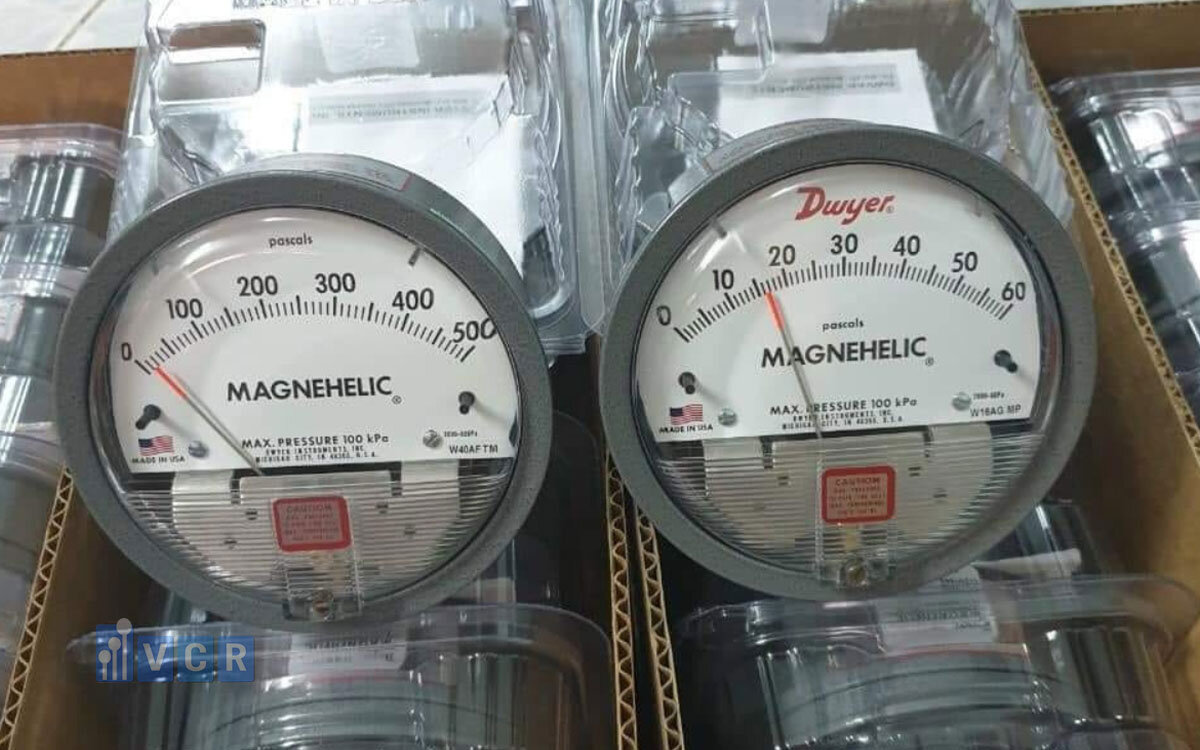
Read more: Cleanroom differential pressure gauge: How to read and calibrate according to ISO standards
Frequently Asked Questions (FAQ)
Does a differential pressure gauge need periodic calibration?
Yes. To ensure measurement accuracy in electronics cleanrooms, gauges should be calibrated every 6-12 months, depending on usage frequency and internal quality control requirements.
Does a small electronics manufacturing room require a differential pressure gauge?
It is recommended. Even in small rooms, maintaining stable pressure across zones is crucial to prevent dust or microbial intrusion, protecting sensitive components like ICs, chips, and circuit boards.
Does VCR support on-site installation?
Yes. VCR provides on-site surveying, consulting, and installation nationwide, ensuring devices operate according to cleanroom standards and clients have confidence in project deployment.
Can differential pressure gauges be integrated with alarm systems?
Liên hệ:
Hotline: 090.123.9008
Email: [email protected]
Website: https://donghochenhap.com/
Dat VCR


